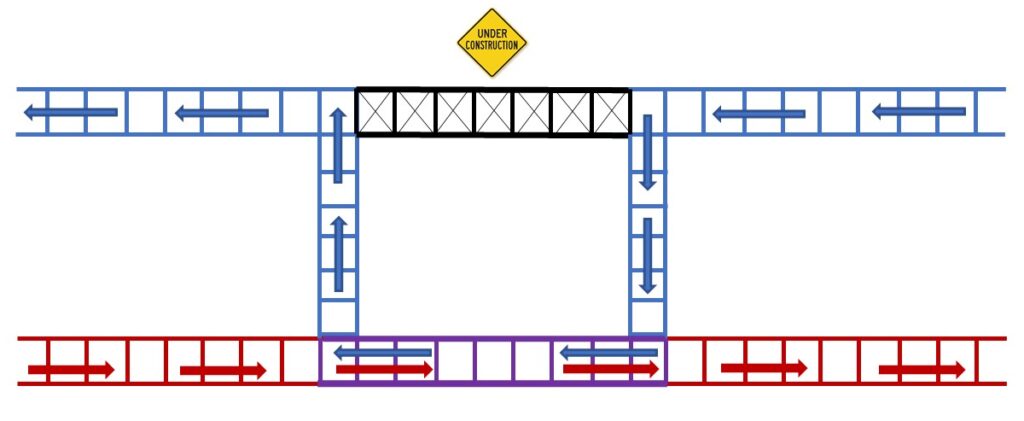Single-Track Operations: Why Blue Line Service Sometimes Ends at Forest Park
Return to BlogMetroLink normally operates on two tracks, one eastbound, one westbound. However, when there is an issue affecting one of the tracks – construction work, vehicle blocking the tracks, etc. – we move all trains to the other track, or what we call single-track operations. This is when all trains, eastbound and westbound, temporarily share a single track.
MetroLink trains can only change tracks where there is a crossover, and the locations of these crossovers determine how long a distance that trains must share a single track. For example, trains have to use a single track whenever there are projects or construction work affecting the MetroLink tracks or stations in downtown St. Louis. However, in order for trains to safely travel around any construction in the downtown tunnels, they have to share a single track for approximately two miles.
Two miles is a long distance for a single-track operation, because only one train can be in that long section of track at a time. Other trains, both eastbound and westbound, need to wait for that one train to clear the shared track before they can continue. This restricts the number of trains that can pass through the area.
If Metro were to run normal Red Line and Blue Line service during this single-track operation, there would not be enough time for a train to clear the shared track before another train needed to go. Trains would start to pile up in lines, waiting for the shared track to be cleared, which would create significant delays, completely inaccurate schedules, and unsafe operations.
Instead, by limiting Blue Line service to only operate between the Shrewsbury-Lansdowne I-44 and Forest Park-DeBaliviere Stations, we reduce train volume to allow trains to use the single track effectively, which prevents disastrous bottlenecks on the tracks, maintains schedules, and minimizes delays.



I understand the reason for single tracking. However, I do not understand why it has been months of single tracking for a problem on the track between Washington Park and Fairview Heights and still there is no work going on at all. That is ridiculous!